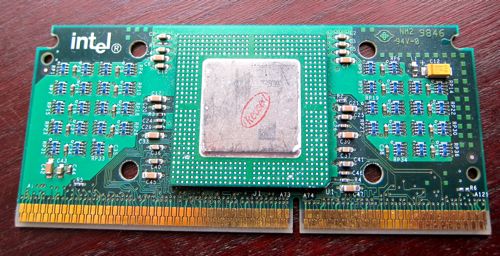Mom's new Pavilion 23 showed up this afternoon, and - except for one goof by HP - is everything it appeared to be, and then some, and is making me eat crow in the process.
The goof (by HP) is including the wrong "keyboard" - the keyboard they forgot was the one with the included LeapMotion and can turn any flat-panel LCD display into a touch-capable display.
The feathers (and I'm still picking them out of my teeth) come from Intel's Pentium G3220T. Unlike the G3220 (no T), the T is aimed at touch-screen deployments - Ultrabooks, UltraTablets (tablets based on Ultrabooks) and desktop AIOs. Like the G3220, it shares lineage with that "other" Haswell stablemate - the Pentium G3258, AKA Pentium Anniversary Edition - the only difference being a locked multiplier.
It still didn't stop it from laying the smackdown on my locked (by the motherboard's G41 chipset) Intel Core 2 Quad Q6600.
One did NOT have more RAM than the other - both have 4 GB of system memory. Only type and memory SPEED differed.
Both are running 8.1 (the quad-core is running 8.1 ProWMC) - still, largely apples to apples (as the quad-core doesn't support Hyper-V; the Baby Pentium does, but it isn't installed).
Yet here I sit, spitting out feathers.
This isn't P4 losing to Q6600 - this is worse.
This is Q6600 losing - to a bottom-end (albeit Intel current-generation) dual-core.
Losing to i3 (or higher) would be easier to swallow; losing to G3220 (T or no T) is much harder to wash down.
The goof (by HP) is including the wrong "keyboard" - the keyboard they forgot was the one with the included LeapMotion and can turn any flat-panel LCD display into a touch-capable display.
The feathers (and I'm still picking them out of my teeth) come from Intel's Pentium G3220T. Unlike the G3220 (no T), the T is aimed at touch-screen deployments - Ultrabooks, UltraTablets (tablets based on Ultrabooks) and desktop AIOs. Like the G3220, it shares lineage with that "other" Haswell stablemate - the Pentium G3258, AKA Pentium Anniversary Edition - the only difference being a locked multiplier.
It still didn't stop it from laying the smackdown on my locked (by the motherboard's G41 chipset) Intel Core 2 Quad Q6600.
One did NOT have more RAM than the other - both have 4 GB of system memory. Only type and memory SPEED differed.
Both are running 8.1 (the quad-core is running 8.1 ProWMC) - still, largely apples to apples (as the quad-core doesn't support Hyper-V; the Baby Pentium does, but it isn't installed).
Yet here I sit, spitting out feathers.
This isn't P4 losing to Q6600 - this is worse.
This is Q6600 losing - to a bottom-end (albeit Intel current-generation) dual-core.
Losing to i3 (or higher) would be easier to swallow; losing to G3220 (T or no T) is much harder to wash down.
![[H]ard|Forum](/styles/hardforum/xenforo/logo_dark.png)


